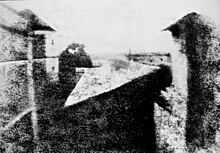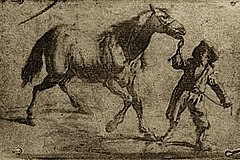History of Photography
Around the year 1800, a made named
Thomas Wedgwood attempted to make a camera, although failing. The invention was
not complete until the mid-1820’s when Nicéphore Niépce had finally succeeded
on making a camera. The image needed several days to process and show up, but
the image was very crude. Niépce’s associate Louis Daguerre went on to develop
something called the “daguerreotype process,” the first ever publicly announced
photographic process, which took only a couple of minutes, rather than days to
produce a clear image. The camera was commercially introduced in the year 1839.
It was the birth of practical photography.
The daguerreotype process had soon after got some
competition, when the “calotype negative” and “salt print” processes were
invented by the man Henry Fox Talbot. Their process reduced the exposure time
from minutes to seconds, making their process much better than the daguerreotype
process. Commercial introduction of computer based digital cameras in the
1990’s had revolutionized photography forever. During the first decade of the
21st century, cameras were quickly beginning to evolve and become
futuristically advanced and developed.
 The oldest surviving permanent photograph was created
by Niépce in 1826 or 1827. It
was made on a polished sheet of pewter and a coating of bitumen (a light-sensitive substance),
a naturally occurring petroleum tar, which was dissolved in lavender oil,
applied to the surface of the pewter and allowed to dry before use.
The oldest surviving permanent photograph was created
by Niépce in 1826 or 1827. It
was made on a polished sheet of pewter and a coating of bitumen (a light-sensitive substance),
a naturally occurring petroleum tar, which was dissolved in lavender oil,
applied to the surface of the pewter and allowed to dry before use.  Around the year 1800, Thomas Wedgwood made the first
known attempt to capture an image by means of a light-sensitive substance. He
used a type of rough paper coated with silver nitrate. Although he succeeded in capturing the shadows of the object placed on
the surface in direct sunlight,and even made shadow-copies of paintings on
glass, it was reported in 1802 that the images formed by means of a camera had
been found too faint to produce, therefore, was unsuccessful on his attempt.
Around the year 1800, Thomas Wedgwood made the first
known attempt to capture an image by means of a light-sensitive substance. He
used a type of rough paper coated with silver nitrate. Although he succeeded in capturing the shadows of the object placed on
the surface in direct sunlight,and even made shadow-copies of paintings on
glass, it was reported in 1802 that the images formed by means of a camera had
been found too faint to produce, therefore, was unsuccessful on his attempt.  The first ever color photograph was made by a set of three black-and-white photographs taken through red, green, and blue color filters and was visible by using three photos with similar filters. It was taken by Thomas Sutton in 1861 for use in a lecture. Maxwell's method is now most widely known through the early 20th century work of Sergei Prokudin-Gorskii. It was made practical by Hermann Wilhelm Vogul. In 1873, he discovered a way to make emulsions sensitive to the rest of the spectrum, which gradually introduced itself into commercial use in the mid-1880s.
The first ever color photograph was made by a set of three black-and-white photographs taken through red, green, and blue color filters and was visible by using three photos with similar filters. It was taken by Thomas Sutton in 1861 for use in a lecture. Maxwell's method is now most widely known through the early 20th century work of Sergei Prokudin-Gorskii. It was made practical by Hermann Wilhelm Vogul. In 1873, he discovered a way to make emulsions sensitive to the rest of the spectrum, which gradually introduced itself into commercial use in the mid-1880s. In 1957, a team led by the man Russell A. Kirsch at the national institute of standards and technology developed a digital version of an already existing experiment, the wirephoto drum scanner. It was created so that photos, diagrams, and other graphics can be transferred into any digital computer memory. The first photo that they had scanned was a picture of Kirsch's infant son Walden. The resolution was only 176 x 176 pixels with only one bit per pixel. It was stark black and white with no intermediate gray tones, but by combining multiple scans of the photograph done with different black and white threshold settings, gray-scale information could also be acquired.
No comments:
Post a Comment